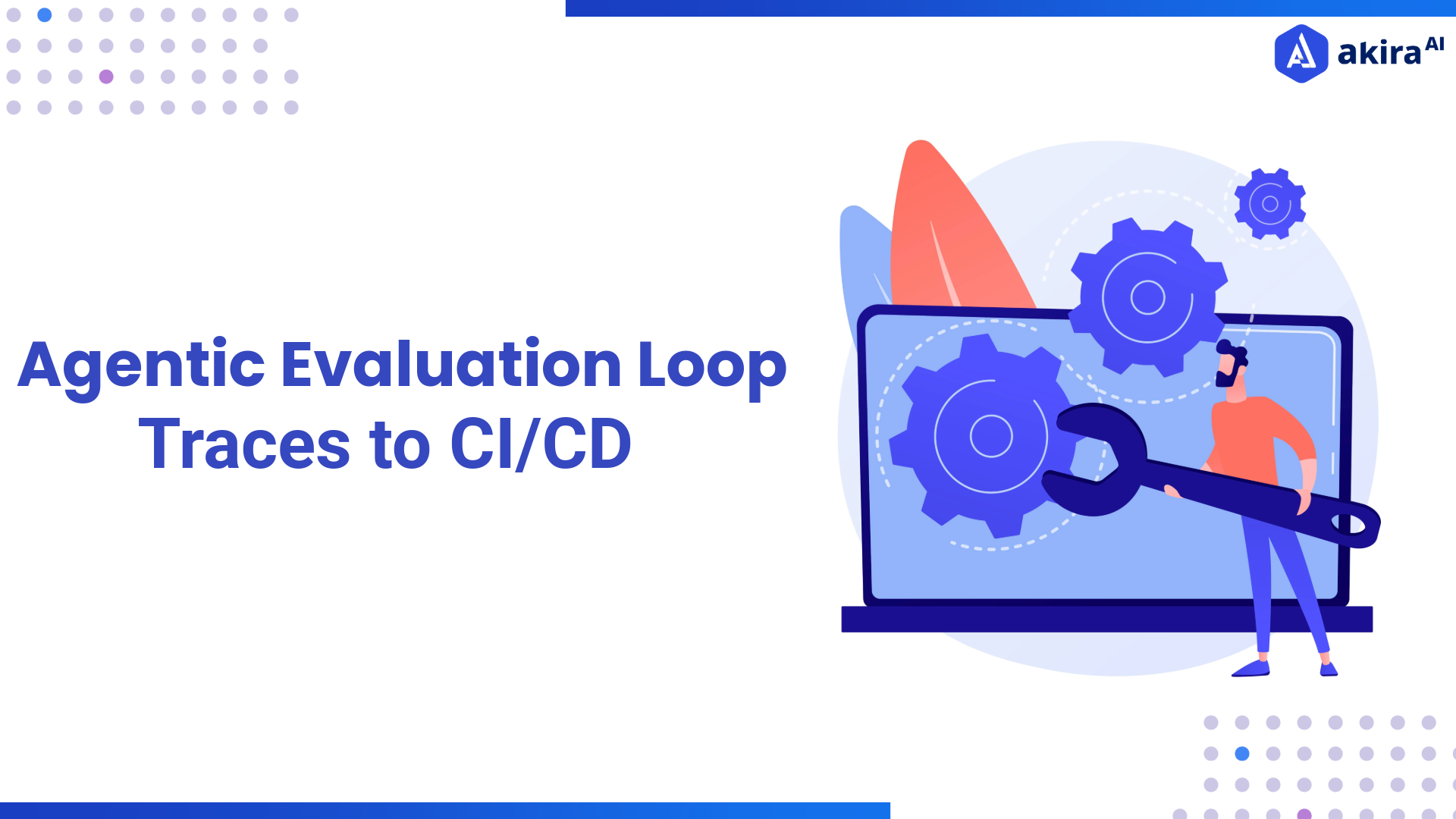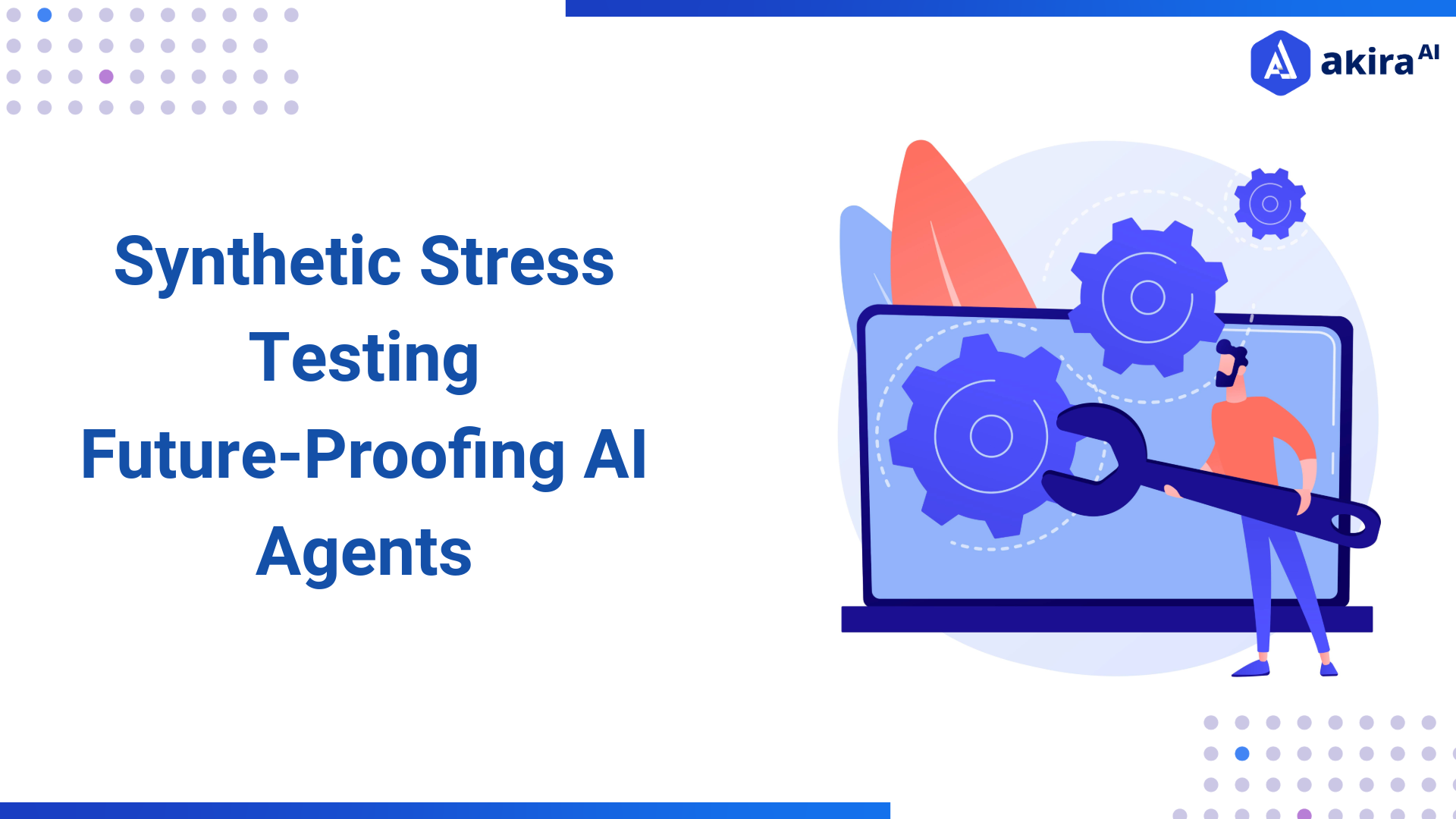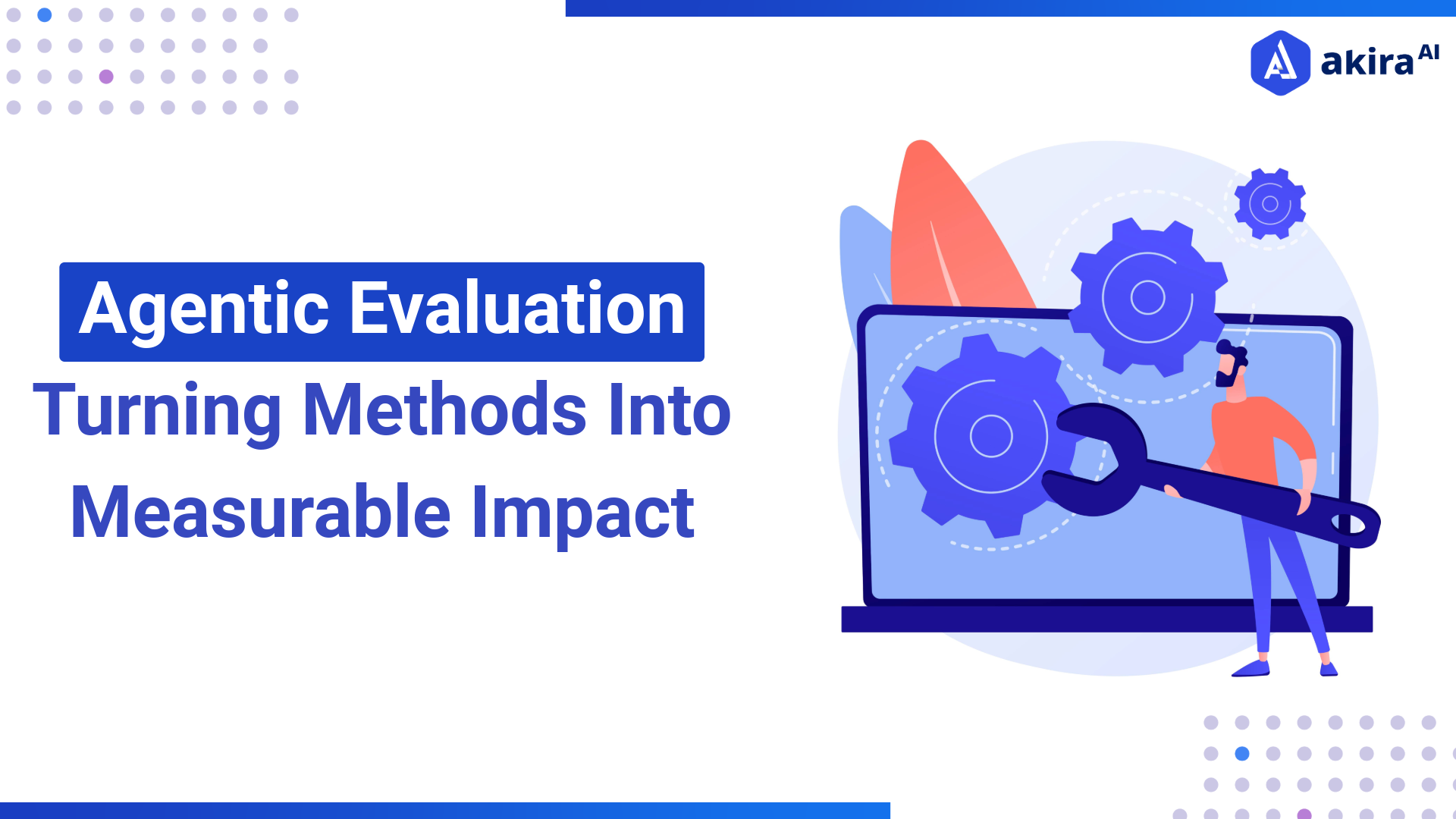Artificial intelligence (AI) agents are no longer science projects confined to research labs. They’re running inside enterprises, powering workflows in IT operations, finance, software engineering, and customer support. This new wave of “agentic” systems introduces not just opportunities, but also challenges: how do we evaluate agent behaviour with the same rigor that we evaluate traditional software?
Unlike microservices, which can be tested deterministically, agents reason probabilistically. Their outputs vary depending on context, prompting, and tool availability. This makes evaluation harder. It also makes it more important.
In this blog, we’ll dive into the Agentic Evaluation Loop in practice, exploring how enterprises can:
-
Instrument traces across supervisor → agent → tool flows.
-
Score sessions using TAS (Task Accuracy Score), IRS (Interaction Robustness Score), and TUE (Time/Utility Efficiency).
-
Enforce CI/CD release gates to block regressions before they ever reach production.
Why Agent Evaluation is Different
For decades, software testing relied on determinism. If you fed an API endpoint a given input, you could expect a consistent output. Unit tests, integration tests, and end-to-end tests all build on this assumption.
Agents break that assumption. They’re probabilistic, context-driven, and non-deterministic by nature.
Some examples of challenges:
-
Chain complexity: Supervisors call sub-agents, which call tools, which return responses that agents reason over, sometimes in multiple iterations.
This is why traditional accuracy testing isn’t enough. Instead, you need to observe how agents behave across full sessions not just final outputs.
Step 1: Instrument Supervisor → Agent → Tool Traces
The foundation of evaluation is instrumentation. Without capturing what happened, you can’t measure or improve it.
A typical agentic system involves multiple moving parts:
Each of these steps needs to be traced.
What a Good Trace Captures
-
Input context: The original request or prompt.
-
Agent reasoning (if exposed): Thought processes or structured plans.
-
Tool calls: API endpoints, parameters, and payloads.
-
Tool responses: Raw output before post-processing.
-
Final agent output: What the system ultimately returned.
Traces should be structured and query able—ideally in JSON, Parquet, or another analytics-friendly format.
Centralizing Traces
The traces should not live in logs scattered across pods. Centralize them in an observability platform, data warehouse, or dedicated trace store.
This enables:
Step 2: Score Sessions with TAS, IRS, and TUE
Instrumentation gives you raw data. The next step is turning that data into scores you can track over time.
We recommend a three-pillar framework:
- Task Accuracy Score (TAS)
TAS can be evaluated manually (via annotators) or automatically (via validators or reference outputs).
- Interaction Robustness Score (IRS)
A robust agent doesn’t just work in perfect conditions; it adapts.
- Time/Utility Efficiency (TUE)
Efficiency drives user satisfaction and infrastructure costs.
Balanced Scorecard
Together, TAS + IRS + TUE form a balanced scorecard.
- IRS = “Did it hold up under pressure?”
- TUE = “Did it get there without wasting cycles?”
Step 3: Enforce CI/CD Release Gates
Now comes the most important part: making evaluation actionable.
You don’t want evaluation to sit in dashboards that nobody checks. Instead, integrate it into CI/CD pipelines as release gates.
How Release Gates Work
-
Curate a benchmark set of tasks (critical paths, common workflows, edge cases).
-
Run agents on these benchmarks every time you modify prompts, logic, or models.
-
Score the runs with TAS/IRS/TUE.
-
Compare to baselines from the last stable release.
-
Block deployment if scores regress beyond thresholds.
Example Gate Policies
These thresholds create objective quality controls similar to how unit tests gate releases in traditional CI/CD.
Closing the Loop: Continuous Improvement
The Agentic Evaluation Loop is not a one-time effort. It’s a cycle:
-
Instrument traces.
-
Score sessions with TAS/IRS/TUE.
-
Enforce CI/CD gates.
-
Feed results back into prompt design, agent orchestration, or model fine-tuning.
This loop creates a virtuous cycle: each release is not only stable but measurably better than the last.
Over time, enterprises build confidence that their agents are not drifting, regressing, or silently failing in ways that hurt business workflows.
Practical Tips for Enterprises
Enterprises often understand the theory of evaluation but stumble on execution. The truth is, you don’t need a moonshot program to start. The goal is to build muscle in small increments, learn from feedback, and scale as maturity grows. Here are some practical, battle-tested tips to guide you:
- Start Small
Don’t fall into the trap of trying to evaluate everything at once. Instead, begin with 5–10 critical workflows the ones that map directly to business outcomes. For a support team, this might mean ticket classification or escalation. For DevOps, it could be incident triage or log summarization.
- Automate Scoring Wherever Possible
Manual labeling is useful for bootstrapping, but it doesn’t scale in production. Instead, invest in automated validators, golden datasets, and lightweight heuristics. For example, if an agent is supposed to fetch a Jira ticket, you can compare its output against a known API response. If it’s summarizing a document, you can check whether required keywords appear.
- Version Everything
One of the biggest mistakes teams make is treating prompts and policies as ephemeral. They are production artifacts just like code. Version your prompts, benchmarks, and agent policies. Store them in Git.
- Integrate with Observability
Scoring results should not live in isolation. Push them into the same observability platforms your engineers already use Grafana, Datadog, New Relic, or Kibana. When evaluation metrics show up next to latency graphs and error rates, they stop being “AI team concerns” and become shared operational signals. This drives adoption across product, SRE, and engineering teams.
- Keep Humans in the Loop
Automation accelerates evaluation, but humans remain indispensable. Agents often fail in subtle, qualitative ways being factually correct but tone-deaf, or technically accurate but contextually wrong. Periodic human audits help catch these blind spots. Think of it like code review: machines do static analysis, but humans provide judgment. The best enterprises mix automation with targeted manual reviews to maintain balance.
In short, evaluation isn’t a speed bump it’s the engine of sustainable scale. By embedding it into the software delivery lifecycle, you ensure that agents don’t just evolve; they evolve responsibly, reliably, and in ways that earn their place in the enterprise stack.




